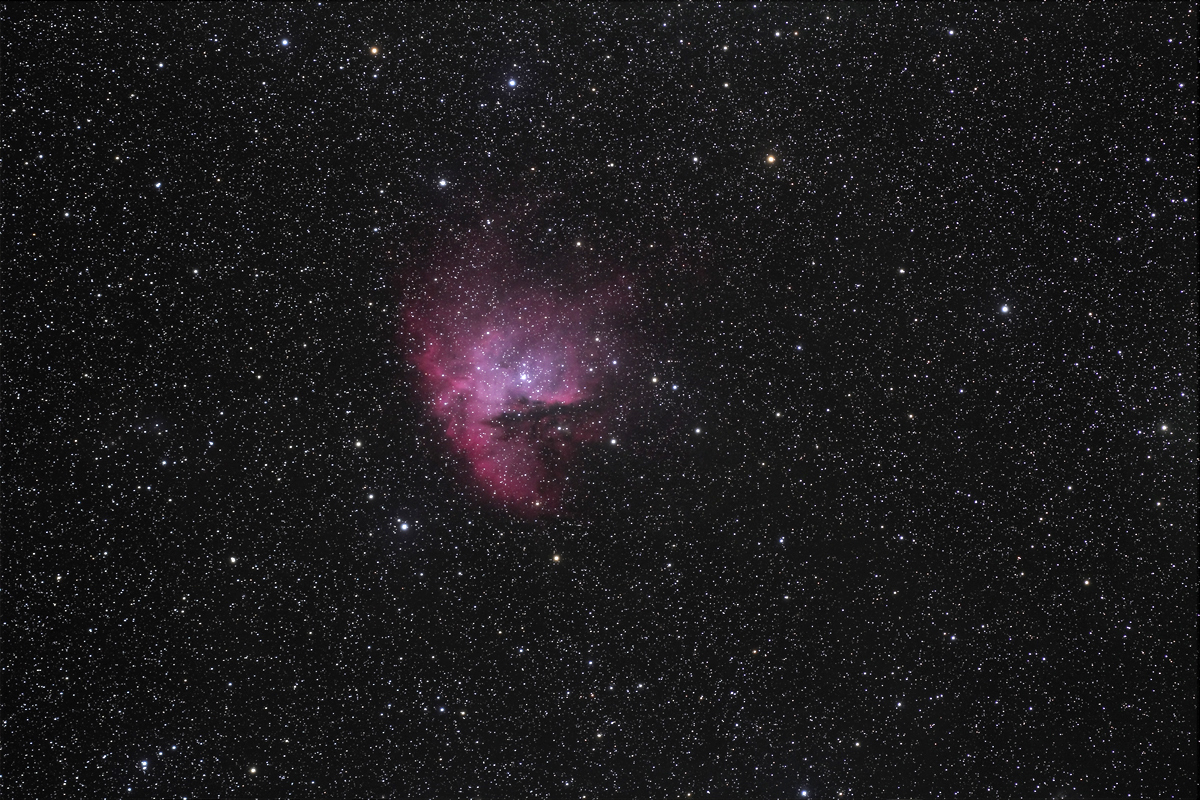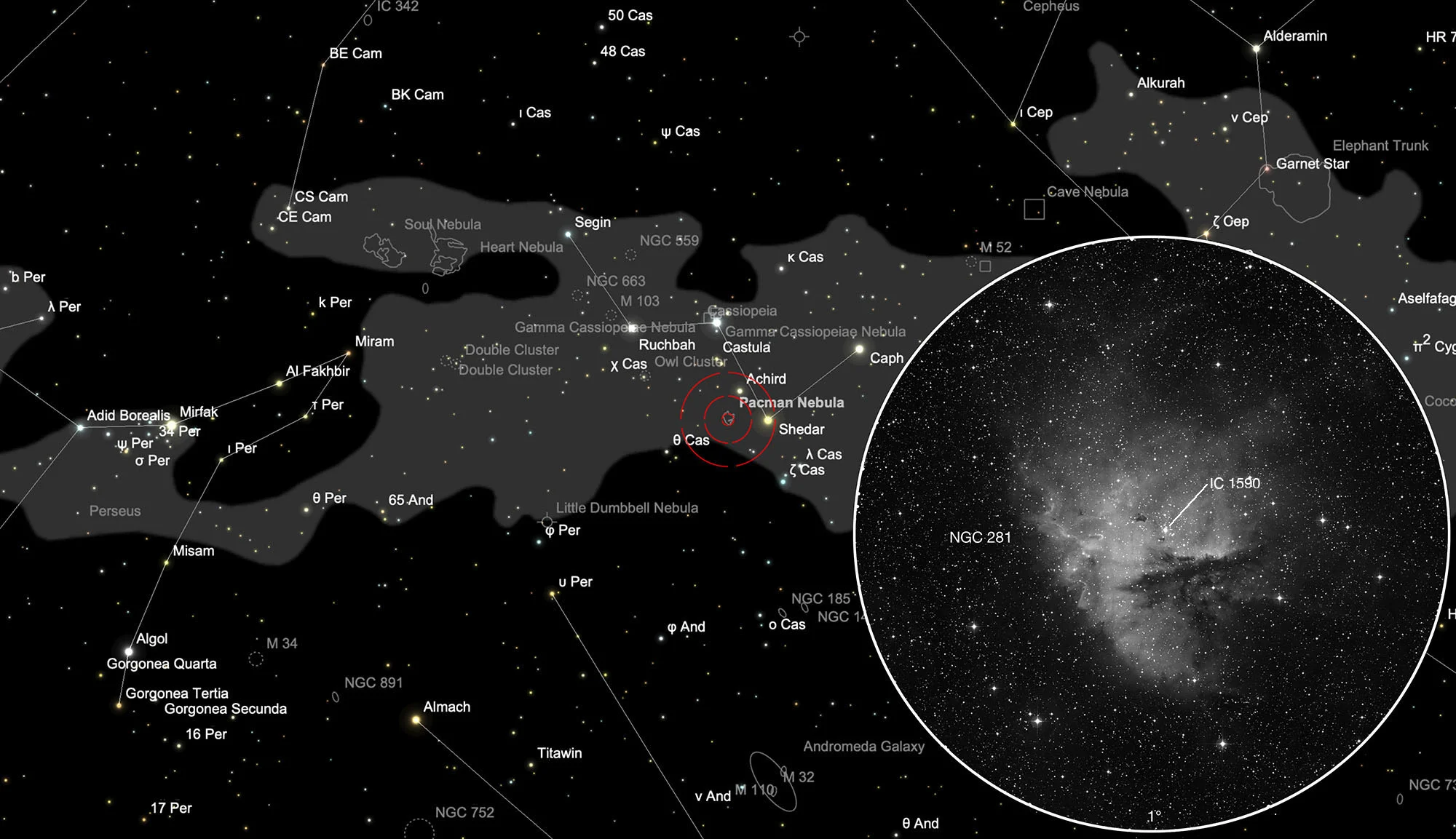Pacman Nebula (NGC 281)





History
The nebula was discovered on 16 November 1881 by the American astronomer Edward Barnard with a 5 inch refractor and was later added to the «New General Catalogue» by Dreyer as NGC 281. Courtney Seligman suspects that Barnard had observed the same nebula again in 1890, but was in the Coordinates around half an hour in right ascension, which is why the same object was later included in the index catalog again as IC 11. [196, 277] At the specified position of IC 11 there is no nebula and the description «vF, L, triple * on np corner» (very faint, large, triple star on northwest corner) is practically identical to that of NGC 281.
The open star cluster IC 1590 was discovered on 31 October 1899 by the French astronomer Guillaume Bigourdan using the 12.4 inch refractor at the observatory in Paris. [277]
Physical Properties
The open star cluster IC 1590 near the centre of the nebula is responsible for most of the high-energy radiation that makes the nebula glow. The brightest of the stars (HD 5005) has 7.7 mag and is a double star. SkySafari 6 Pro [149] specifies a distance of 3.9 arc seconds here.
For the nebula NGC 281 one finds at Simbad [145] a distance of 3.1 kpc (10'100 light years) and for the small star cluster IC 1590 a distance of 2'384 kpc (7776 light years).
| Name | RA | Dec | Type | Dim | MD | Dreyer Description | Identification, Remarks |
|---|---|---|---|---|---|---|---|
| NGC 281 | 00 52 53.8 | +56 37 30 | EN | 35 × 30 | 2.900 | F, vL, dif, S triple * on np edge | IC 11; LBN 616; in OCL 313 |
| IC 11 | 00 52 53.8 | +56 37 30 | dup | 35 × 30 | 2.900 | vF, L, triple * on np corner | NGC 281; LBN 616; in OCL 313 |
| IC 1590 | 00 52 48.0 | +56 37 54 | OCL (OCL+EN) | 2.384 | Cl, vL, st sc, 281 f | in N 281 |
Finder Chart
The Pacman Nebula is located under the «W» of the Cassiopeia constellation. The constellation is circumpolar, but it is highest at night from June to March. Form an equilateral triangle with the two stars Shedar (α Cassiopeiae) and Achird (η Cassiopeiae).
Visual Observation
762 mm aperture: NGC 281, also known as «Pac Man» due to its appearance, is dominated by the black snout, which is already squeezing into the picture far from the side. In the brighter part of the nebula, similar to an aquarium on colour photos, the larger granule can be seen on the romboid of 4 faint stars. — 30" f/3.3 Slipstream Dobsonian, Hasliberg Reuti, 3. 3. 2022, Eduard von Bergen
